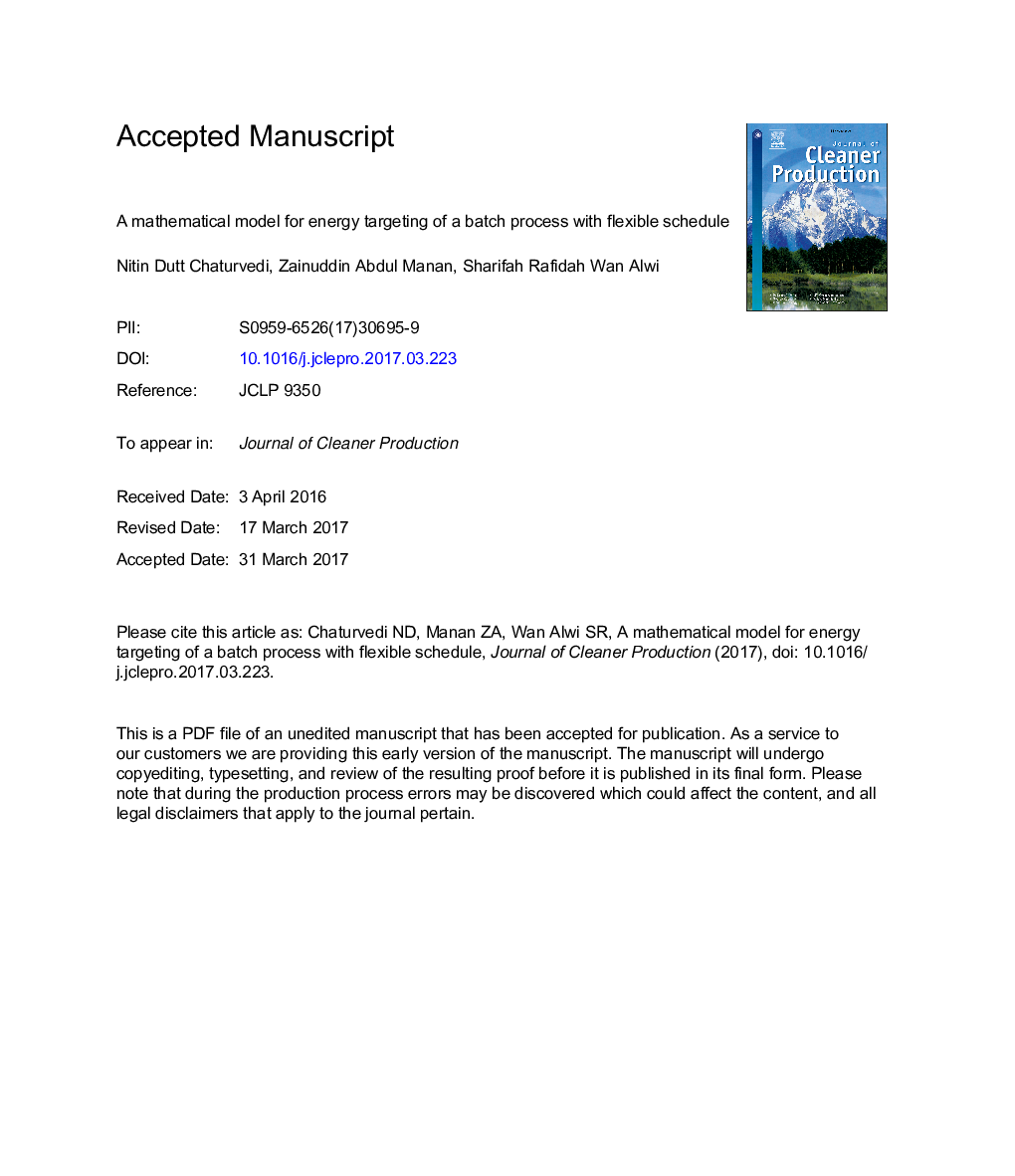| Article ID | Journal | Published Year | Pages | File Type |
|---|---|---|---|---|
| 5479516 | Journal of Cleaner Production | 2017 | 29 Pages |
Abstract
This paper presents a mathematical model to determine the minimum energy targets for a batch process with flexible schedule. Techniques developed for flexible-schedule batch processes typically result in nonlinear formulations. The proposed model was formulated as a mixed integer linear programming model (MILP). The model is developed based on the source-demand classification of process streams instead of the typical classification of hot and cold streams. In such classification, each stream is simultaneously treated as a source at its shifted supply temperature, and as a demand at its shifted target temperature. Such classification eliminates the model's non-linearity and reduces its complexity as well as the solution time. The mathematical model can be used to calculate the utility targets for a flexible-schedule batch process. Application of the proposed mathematical formulation demonstrates significant energy saving potential. The first illustrative example predicted a potential reduction of 11% cold utility and 14% hot utility. In the second illustrative example, up to 35% hot utility reduction and 62% cold utility reduction could be achieved.
Related Topics
Physical Sciences and Engineering
Energy
Renewable Energy, Sustainability and the Environment
Authors
Nitin Dutt Chaturvedi, Zainuddin Abdul Manan, Sharifah Rafidah Wan Alwi,
